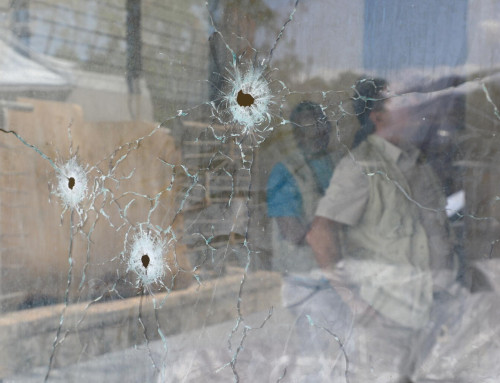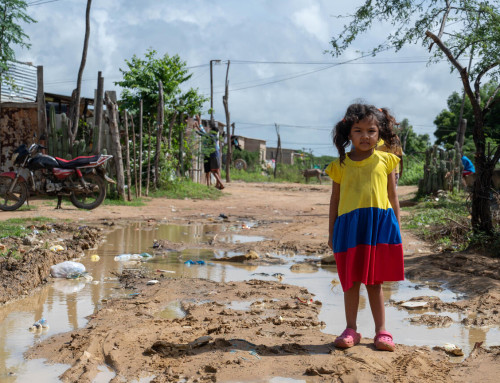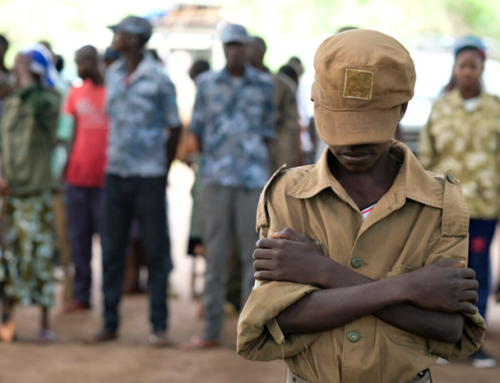Madame President,
Excellencies,
Ladies and gentlemen,
I would like to thank Malta for convening this important discussion and the Security Council for the opportunity to represent civil society and children at this briefing, as well as the Special Representatives of the Secretary-General for Children and Armed Conflict and on Violence against children.
My name is Divina and I am an 18 year old award-winning peacebuilding practitioner from Cameroon focusing on prevention, children’s rights and gender-related issues. I started my journey as a child activist for peace at the age of 14 years by creating an organisation made up back then of 100 children as changemakers and mobilising ever since at least 5, 000 children in peacebuilding action per year.
Today we are still recording several wars and armed conflicts across the world that may prevent the achievement of the 2030 Agenda. In Africa and the Middle East, the socio-political context is characterized by an escalation of violence and insecurity perpetrated by armed groups, including some designated as terrorist by the UN. My country, Cameroon, is also affected by such increasing levels of violence and insecurity.
Around the world, conflicts have consequences on human rights and most particularly on children’s, girls’, and women’s rights. In Africa, thousands of children and youth have been forced to serve as combatants, mine testers, messengers, and cooks, and some of them are even used as human shields. Girls and women are targeted for horrendous purposes: as sex slaves for military or armed group leaders.
To respond to the needs of those children, I have created “Children for Peace” in 2015, which is a child and girl-led movement working across Cameroon and some African countries. Children for Peace operates in complex cultural systems and areas affected by conflicts and violent extremism to democratize the public sphere for inclusive governance and greater political and economic expression of children in public policies; to increase the number of children in peacebuilding and reduce their role in violent extremism; and to engage them to mobilize all stakeholders to prioritize efforts on peacebuilding, children’s and girls’ rights and effective socio-economic development. Children for Peace strategy relies on art, capacity building, operationalization of gender peace clubs, mentoring, advocacy, awareness raising, networking, documentaries, psychosocial assistance, and software design.
With Children for Peace, we have implemented several projects.
Among those, Silence the Guns launched in 2019 is one of the flagships. It is an integrated citizen engagement project led by girls, aiming to realize a conflict free Africa by engaging children and girls to mobilize all stakeholders to prioritize efforts on peace, children’s and girls’ rights, and effective socioeconomic development. Through the project, children are taking positive action towards finding better solutions to issues related to peacebuilding, violent extremism, and human rights. Children, religious, traditional and community leaders and local authorities work closely together against hate and violent speech and illicit proliferation of weapons. Local governance of prevention and conflict management is being reshaped with children as key actors committed to unleashing grassroots approaches and innovative solutions to build peace and improve children’s rights in war-affected areas.
My work with “Children for Peace” has been acknowledged and recognized – because it gives results.
The project Silence the Guns through community awareness and advocacy campaigns has contributed to reach at least 5.5 million people. The project facilitated support for the disarmament, demobilization, and reintegration of 5,000 children formerly associated with armed forces or groups. This advocacy and work with children but also with communities has positively impacted children formerly associated with armed forces and groups and as a result, the stigmatization of disengaged children and ex-combatants has lowered by 45% in the targeted areas, far North and Northwest Cameroon.
We also created and have been operationalizing in schools, neighborhoods, churches, and mosques 270 peace clubs led by girls aimed to improve children’s understanding about peacebuilding, children’s rights, gender equity and build their capacity in conflict prevention and resolution. As part of this initiative, children have elaborated and implemented the children’s declaration against violent extremism and radicalization. Children are also engaged to resolve conflict between tribes or communities by developing friendships between their children and building on this to resolve interethnic, land or religious conflict and promote socio-economic interdependence. This initiative also pairs communities and families in conflict by using children as vectors of peacebuilding and unification of their conflictual families.
To strengthen prevention within the CAAC agenda and to fully leverage existing tools to prevent grave violations against children in situations of armed conflict, I will focus on one specific recommendation that is close to the efforts of my organization Children for Peace: children’s perspective on peace.
To better integrate children’s perspectives on peace and develop sustainable solutions, States should encourage the involvement of children and youth of diverse identities in the co-creation process from the start to better understand their context and realities and, ultimately, design more relevant, effective, and inclusive programs. In projects and policy implementation, stakeholders should create an enabling environment for young participants so that everyone can make the most of the opportunities available. For example, before implementing projects, my organisation makes field trips to administer questionnaires to children to understand their points of view regarding a specific issue and the solution they would propose to mitigate or end the problem. We make sure that the beneficiaries are represented in the conceptualization, implementation and follow up of the project to own it and ensure its replicability and durability of the obtained results.
Facilitating the involvement of children in decision making also means removing technical and financial barriers that stand in the way of youth participation. From my experience, it has been difficult to identify and win the necessary funding to intensify my action either because governments do not fund child- or girl-led organisations or the procedures of many funders most of the times are generally complex. As an African, when it comes to working with governments or major international organizations locally and internationally, my feeling is that most of them seem not take children and young girls seriously. They do not always give them space to make decisions. They prefer to work with adult-led organizations working on issues that concern children and girls. To close the cycle of conflict, there is a need to invest in children and facilitate their participation. Stakeholders should support the development of platforms that prioritize the perspectives of children, including their experiences, and allow for collaboration with peers and youth leaders to work together for peace and human rights, and initiatives that prioritize the inclusion of children in peace processes.
Education is fundamental to better include children’s perspectives in decision making. This means investing in education that includes critical thinking, mediation, communication, and working with others. Education and advocacy must also target adults to encourage them to better understand the perspectives of children and their views on peace and security. Efforts should be further made to empower children to exercise and claim their rights by advocating for and facilitating their participation in national, regional, and international human rights mechanisms and processes.
States should strengthen the accountability to children by building synergies between the Convention on the Rights of the Child and other Treaty Bodies, the Human Rights Council, the SDGs, and the youth agenda. We need coalitions to influence international political discourse and agenda by setting and promoting innovative discussions and perspectives of children’s rights in a changing global environment.
Finally, States should ensure that the diversity of children’s experiences in conflict, which can vary depending on factors such as gender, race, abilities, sexual orientation, age, socioeconomic background, and other forms of exclusion and marginalization, are factored into the development of law, policy, and practice.
To conclude, there is no doubt that children can play a key role in peacebuilding and specifically in the prevention of violations against their rights with or without sufficient resources. They should be involved in all the processes of policies – formulation, implementation, and evaluation. They are the first victims of conflicts. We must invest for their free participation and contribution by investing in children’s meaningful participation regardless of their identity, by reinforcing the ratification and implementation of the Convention of the Rights of the Child, and by ensuring and strengthening the complementarity and partnerships across the UN system for the prevention of violations and abuses against children and Children’s Human Rights Defenders, including UN Member States, UN entities, and regional bodies.
Thank you.





